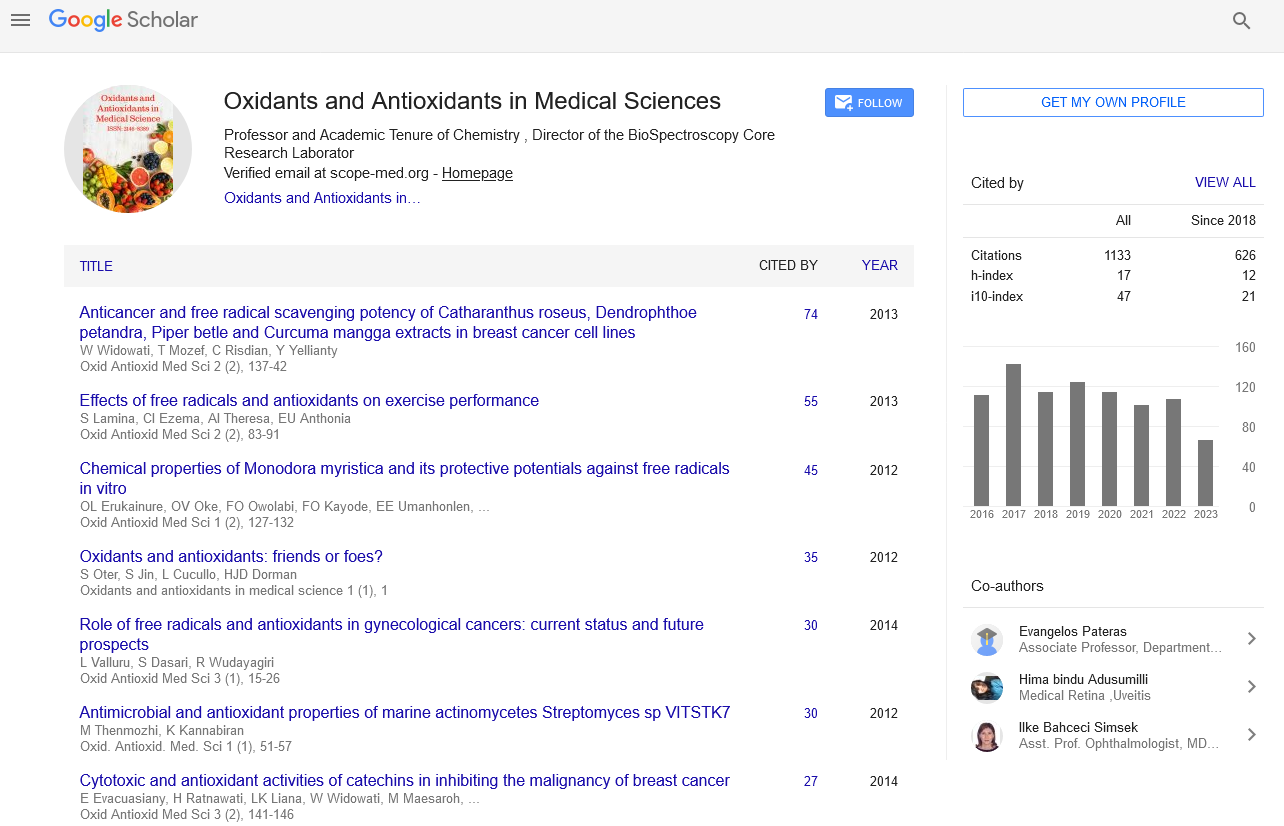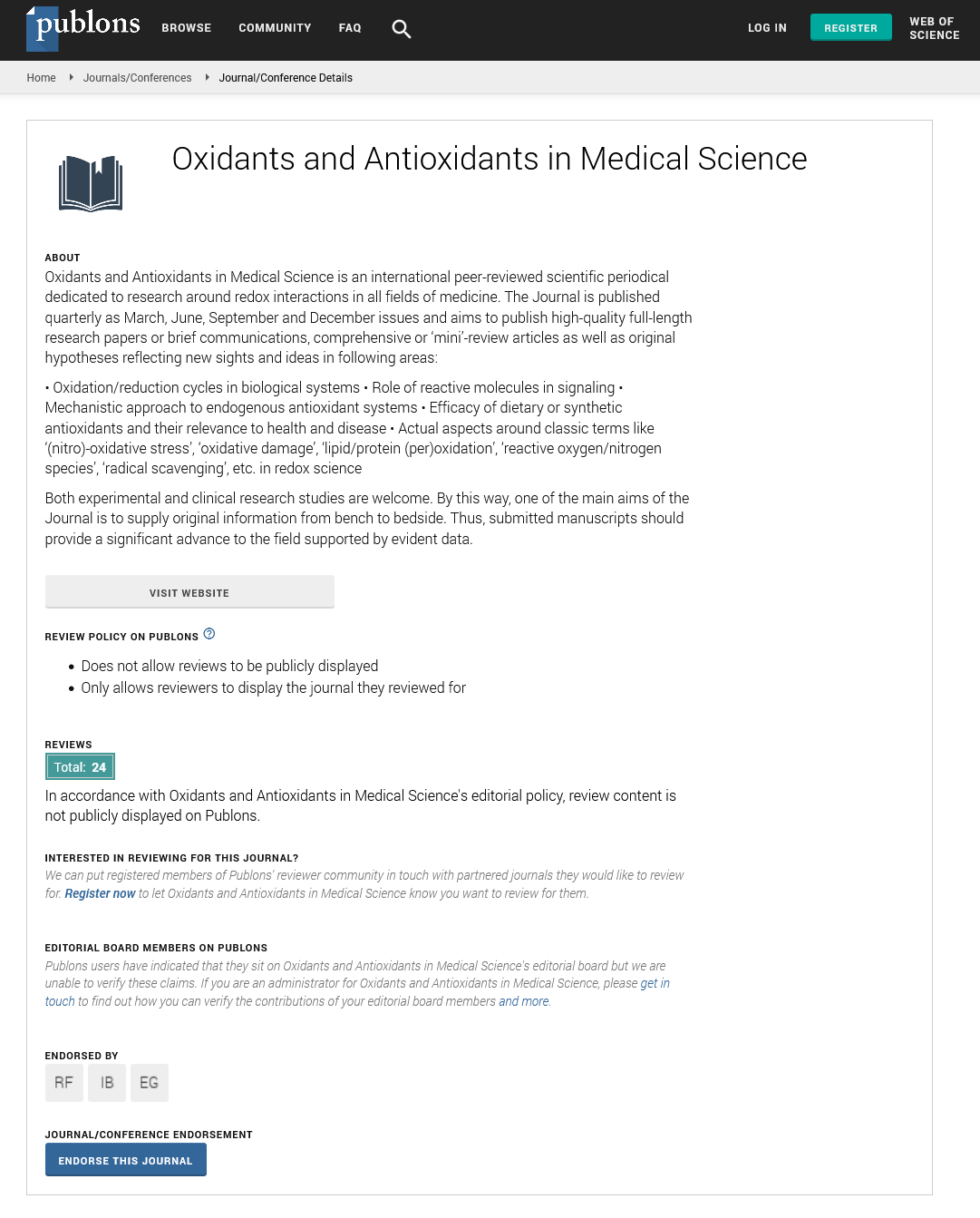Salivary superoxide dismutase levels in oral leukoplakia and oral squamous cell carcinoma; a clinicopathological study
Abstract
Shishir R. Shetty, Subhas G. Babu, Sucheta Kumari, Arvind Karikal,Pushparaja Shetty, Shruthi Hegde
In the South-East Asian countries oral cancer is one among the commonly occurring malignancies due to tobacco use and quid chewing habits. Early stage diagnosis of the disease is reported to have a better prognosis. Sialochemistry studies involving antioxidants have recently gained importance as biomarkers for oral cancer risk assessment. The aim of this study was to estimate the levels of superoxide dismutase in saliva of patients with oral cancer, oral leukoplakia and healthy controls. Three study groups comprising of 25 oral cancer patients, 25 oral leukoplakia patients and 25 healthy controls were involved in the study. Saliva sample collected from the patients were evaluated superoxide dismutase by nitroblue tetrazolium (NBT) chloride method. The data obtained were analyzed using the one way ANOVA test. There was a significant difference between the levels of salivary superoxide dismutase in between oral cancer, oral leukoplakia groups when compared to healthy controls. The levels of salivary superoxide dismutase were significantly lower in oral cancer when compared to oral leukoplakia. These results suggest that salivary superoxide dismutase level estimation could be used to determine the risk of oral cancer as a non-invasive modality
PDF






